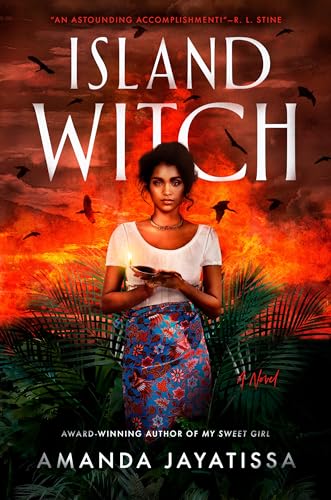Island Witch
Amara is a demon priest’s daughter in a remote village in 19th-century Sri Lanka. The times are changing. With colonisation, a new religion has taken hold, and Amara’s family, adherents to the native religion (a mix of Buddhism, Hinduism, and animism), have become pariahs in their own land.
Amara must grapple with multiple challenges. At school, she is picked on by bullies because of her religion. Her parents are subjected to abuse by the villagers. Amara faces prejudice because of her skin colour. Her mother had broken with her rich family to marry for love but remains dependent on the family. Amara is in love with Raam, but she faces pressures to go for an “arranged” marriage. Tension mounts with a series of vicious attacks on men of the village. Amara’s father is suspected of being behind them. Amara is haunted by dreams that are prescient of the ghastly attacks. The gutsy young Amara fights back against the machinations that threaten to smother her very being. The denouement, when she gets to the root of evil, is horrifying and calls for extreme measures.
This is a dark work. Rape and abuse are part of the story; few characters have a good side. While this heightens tension, some readers may have preferred more nuance in characterisation. Amara displays a rather strange lack of knowledge of the facts of life at one point. The editorial choice of leaving lines of dialogue in Romanised Sinhala in addition to English seemed odd to this reviewer.
For fans of historical and gothic fiction who do not mind these small bumps, this remains an unusual treat – a rare work set in Sri Lanka, well-researched, and written with a deep understanding of place and time.










